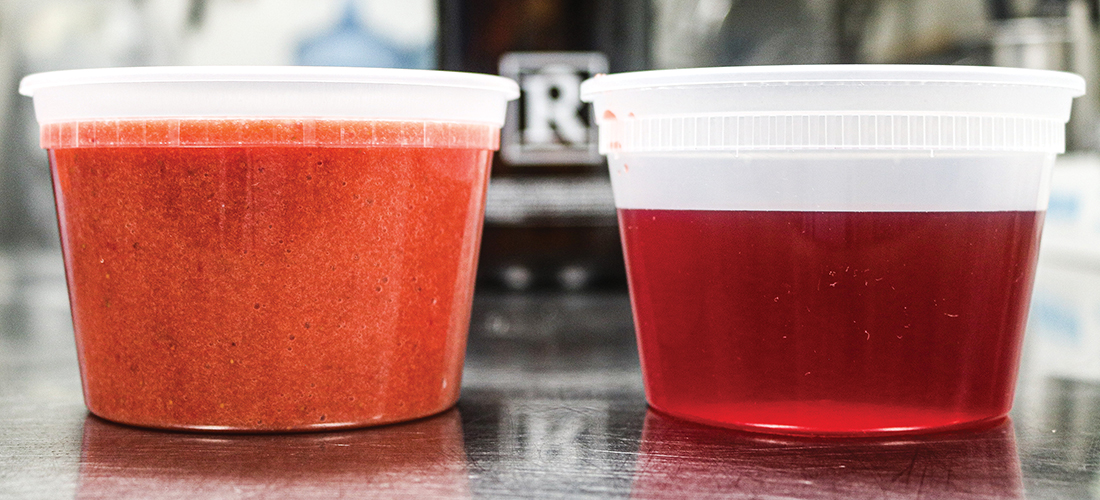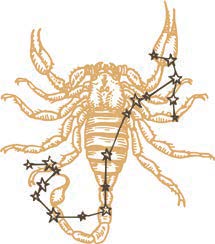
Let’s Be Perfectly Clear
Juice porn for nerds
By Tony Cross
Six years ago, I purchased the book Liquid Intelligence, by Dave Arnold. When it arrived in the mail, I remember thumbing through the pages and quickly realizing that everything I was laying my eyes on went right over my head. “Ohhhh man, I’m dumb,” I thought. The book deals with the science of cocktails, and it’s laid out like a textbook. I failed chemistry in high school, so it’s safe to say this triggered scary flashbacks and my PTSD with, well, being dumb.
As insecure as I was, I still marveled at Arnold’s brilliance and passion for perfection chapter by chapter. There were some tricks I picked up right away — like how to properly milk-wash a spirit — but these little gifts were few and far between. If you’ve ever looked through the book, you’ll know exactly what I mean. The section that intrigued me the most was Part 3: Clarification. “Unclear liquids are actually suspensions, containing particles that reflect and scatter light in a random pattern that makes the liquid appear milky. Clarification removes these particles.” Pictured was a glass of cloudy, blended strawberry juice and next to it a glass of clear strawberry juice. Arnold goes on to say, “Why clarify? Why breathe?” I was hooked.
There are a few ways to clarify juices. I’m going to talk about centrifuging — the way I clarify — but feel free to check out Liquid Intelligence for others. So, what’s a centrifuge? Have you ever donated blood? When they take the tube with your blood, they put it in this machine that spins the tubes thousands of times the force of gravity. This allows the platelets and blood plasma to be separated from the other blood components. That machine is a centrifuge. For juices, centrifuges spin so fast that the solid particles in the liquid get thrown to the outside; this is called centrifugal force. But you know that, right? You’ve been on a Tilt-A-Whirl.
When Arnold’s book came out, the cheapest centrifuge (to produce large volumes) wasn’t. It came in at just under $10,000. Yikes. I was bummed. But then, a few years later, Dave made an announcement that he had created the first centrifuge for bartenders and chefs. The Spinzall was released in 2017, and to my knowledge, it’s still the only centrifuge on the market catering specifically to bartenders/home bartenders. A friend of mine got one for Christmas from his wife, and I was able to tinker around with it. (His wife told me that it was still in the box! Gimme!)
I was asked to give a science-based cocktail class around that time — hey, I told the committee I was completely unaware of what science is but they didn’t care — and was hoping that the centrifuge would come in handy. Following the directions and using the correct enzymes to break the solids down (more on that in a moment), I was able to clarify fresh strawberries.
When the Spinzall finished doing its thing, I was in love. This might not do it for you, but it is what it is. I was so excited I took pictures and live video of the clarified juice coming out of the centrifuge. Everyone I told or messaged smiled or texted back saying “cool,” but nobody really gave a rat’s ass. You’re into brunettes, I’m into blondes. Whatever.
Google this Spinzall thing and I’ll break down how simple it is to use. Let’s take strawberries as an example. You’ll need 400 grams washed and diced organic strawberries and an enzyme called Pectinex Ultra SP-L. You need this exact type. I found a knockoff version on Amazon, and it did not work. (What’s a counterfeit enzyme look like anyway?) You can get the Pectinex over at modernistpantry.com. Pectinex Ultra SP-L is an enzyme that breaks down pectin structure. As Dave points out in this book, SP-L “is a mix of enzymes that are purified from Aspergillus aculeatus, a fungus found in soil and rotting fruit.” Basically, SP-L busts a cap in pectin’s liver. It’s needed to clarify most juices, so I always have a large bottle handy.
And just like using the centrifuge, SP-L is easy to use. Here we go: Put your washed and diced strawberries into a blender on medium for 30 seconds. Add 2 milliliters of Pectinex SP-L, and then blend on medium (or medium-high, depending on your blender) for another minute to two. Let sit for a few minutes and you’re ready to run it through your Spinzall. This is where I’m going to stop giving advice. Arnold provides online videos with detailed operating and safety instructions so you won’t put an eye out.
You may be asking yourself, “Why the hell do I want to clarify?” If you’re working in the kitchen at a restaurant, this centrifuge does way more than clarifying juices. It also makes herb oils, purees, no-churn butter, etc. If you’re a bartender, clarified juices can be used to make shelf-stable cordials (when paired with appropriate food-grade acids). Juices that are clarified are silky and smooth on the palate. Try making a daiquiri with clarified lime juice and you’ll see what I mean.
If you’re not in the business, I can see why you may be hesitant to purchase this for your home bar. But, if you really geek out on cocktails and love playing host for your friends and family, go for it. There are so many ways to put the Spinzall to use that you won’t get bored.
As for me, this centrifuge has been monumental for Reverie Cocktails. It’s allowed us to look at our cocktails in a whole new light. Making and distributing kegs of carbonated cocktails is completely different from making them one at a time, and this sucker has been a lifesaver. Even if you don’t gravitate (oh, geez, sorry about that) toward owning a centrifuge, or have zero interest in clarifying anything, I hope this high school chemistry dropout has shed the smallest ray of light on how science is everywhere, even in your cocktail glass. PS
Tony Cross is a bartender (well, ex-bartender) who runs cocktail catering company Reverie Cocktails in Southern Pines.





